
|
2014 Final Year Projects |
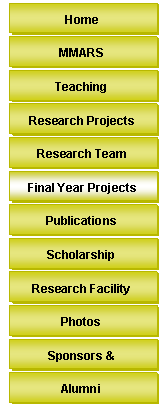
|
Last Updated February 2017 |
|
Monash University’s final year project (FYP) program is for a full academic year with 12 credit points. Students can execute the projects in group or individually. Two or more students can group together to carry out the research project. The following is a complete list of completed and on-going FYPs. The list shows my research interests in various areas of electrical and electronic engineering especially in wireless communications and RF & Microwave and Antenna Engineering and microwave biomedical engineering. I always motivate my senior students to perform high quality works so that they can engage in active learning in the FYP projects and develop confidences in future endeavours. So far I have supervised about 100 FYP students in Monash University and Nanyang Technological University in Singapore (from 1999-2004). Please note the numbers in parentheses indicate the number of publications generated by the FYP projects.
Semester 1, 2017 Industry Sponsored Projects (Industry Partner: nextLiFi, immediate opening) Project 1: Design & build operating prototype for LiFi system that enables high speed data communication: The project concerns the design and development of a working prototype that enables high speed data (text) transmission, from one device to another device using the LiFi technology. High-quality analytical and hands-on skills in both light wave and wi-fi technologies, a commitment to experimental research, and development of theoretical concepts are essential. The project can recruit up to 2 FYP students starting in February 2017. [Picture Sources:http://www.evilyoshida.com/thread-4308.html,www.nextlifi.com/,www.inc.com/lisa-calhoun/the-top-10-most-disruptive-technologies-of-2015.html, (accessed 26/11/2016) (Sponsored by nextLiFi Pty Ltd; http://www.nextlifi.com) Project 2: Design & development of an LED RGB prototype that is capable of submitting data signal speeds at a higher ratio to that of existing RGB LED’s. The project concerns the design and development of a new LED RGB prototype that is capable of transmitting data signal speeds at a higher ratio to that of existing RGB LED’s. High-quality analytical and hands-on skills in semiconductor physics and fabrications, lightwave and wifi technologies, a commitment to experimental research, and development of theoretical concepts are essential. The project can recruit up to 2 PhD scholars together with research assistants for three years starting in 2017. (Source: http://www.nextlifi.com, accessed 15 January 2017) (Sponsored by nextLiFi Pty Ltd; http://www.nextlifi.com) Project 3: Design and develop a hybrid LiFi network that operates alongside complimenting a WiFi network The research involves the development of a Hybrid Li-Fi network that operates alongside complimenting an existing Wi-Fi network. The uplink will be via a WiFi network and down link via LiFi network. High-quality analytical and hands-on skills in both RF/microwave and light wave, a commitment to experimental research, and development of theoretical concepts are essential. The project can recruit up to 2 FYP students starting in February 2017. (Sponsored by nextLiFi Pty Ltd; http://www.nextlifi.com)
Regular FYP Research Projects in offer in S1, 2017 ACADEMIC YEAR 2017 ¨ Wearable Object Detection System for the Blind (co-supervised by Dr. Gita Pendharkar) ¨ Low Cost Solar ECG with Bluetooth Transmitter (Jointed supervised by Dr. Gita Pendharkar) ¨ An Infant Monitoring System Using CO2 Sensors ¨ Fall Detection & Activity Monitoring for Older people using motion sensors ¨ To implement wheel chair direction control with hand gesture recognition ¨ To implement the stock updating & detecting the expiry date for pharmacy using Radio Frequency IDentification (RFID) System ¨ 5G Wireless Communications ¨ Low Cost and Low Power IoT and e-textile Devices ¨ Chipless Radio Frequency IDentification (RFID) System
ACADEMIC YEAR 2016-2015 ¨ Techno-economic evaluation of bus-tie open scheme performance (Sponsored by United Energy) ¨ Using (three) Accelerometer-Based Compact Systems integrated as a Diagnostic Tool to Assess and Monitor Drug-Induced Parkinsonism (Jointed supervised by Dr. Gita Pendharkar) ¨ Wireless Power Transmission
ACADEMIC YEAR 2015-2014 ¨ Bluetooth Low Energy Portal (sponsored by UMD Pty Ltd) ¨ RFID Enabled Tugs and Dollies in Sydney Airport (sponsored by UMD Pty Ltd)
ACADEMIC YEAR 2014-2013 ¨ Wireless Sleep Apnoea Monitor ¨ Microwave Power Transmission ¨ Differentiating gait analysis between walking and jogging
ACADEMIC YEAR 2013-2012 ¨ Antennas for Microwave Imaging of Breast Cancer ¨ Automated Circuit Breaker Monitoring ¨ Continuous partial discharge monitoring of faulty power apparatus in switchyard using smart antenna ¨ Gait Analysis of patients using RFID
ACADEMIC YEAR 2012-2011 ¨ Continuous RF monitoring in Power Apparatuses ¨ Circuit breaker (CB) timer of wireless technology in power engineering ¨ Gait Analysis of Patients using RFID ¨ Application of RFID in smart shelves ¨ Chipless RFID in Australian Banknotes ¨ Chipless RFID for Library management system ¨ RFID toys
ACADEMIC YEAR 2011-2010 ¨ Continuous RF monitor of power apparatus – localization ¨ Continuous RF monitor of power apparatus ¨ Microwave Biomedical Devices ¨ Wireless Power Transmission
ACADEMIC YEAR 2010-2009 ¨ mm-wave chipless RFID tag design ¨ Wireless battery charger ¨ RF power transmission ¨ Wireless Battery Operated Orthopedic Needle ¨ VHF Chipless RFID for Low Cost Tagging ¨ RFID anti-collision algorithm ¨ A very low cost RF detector for power apparatus
ACADEMIC YEAR 2009-2008 ¨ Development of a 2.45 GHz chipless transponder for RFID application ¨ Antennas for Microwave Imaging of Breast Cancer
ACADEMIC YEAR 2007-2008 ¨ RFID tag development (1 conference paper) ¨ Antenna arrays for anti-collision automotive radars (1 conference paper) ¨ Microwave power transmission (2 conference papers)
ACADEMIC YEAR 2006-2007 ¨ Mobilephone design ¨ RFID tag development ¨ Anti-collision automotive radars ¨ Ultra wideband antenna and filter design ¨ Microwave power transmission ¨ Smart antenna signal processing
ACADEMIC YEAR 2005-2006 ¨ Mobilephone design ¨ Negative refractive materials ¨ Anti-collision automotive radars ¨ VSAT antenna development ¨ Microwave power transmission
ACADEMIC YEAR 2004-2005 ¨ Mobilephone design ¨ Negative refractive materials (1 journal) ¨ Anti-collision automotive radars ¨ VSAT antenna development ¨ Microwave power transmission |

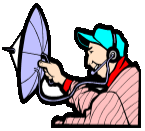
|
Procedure to select a project that a student wants to pursue:
1. Look at the list of the project below and read the titles carefully. Any keyword that matches your interests, go to Google and do a search of the keyword. Learn some basic and fine tune your match. 2. Write a two-page research proposal and bring the proposal to Dr. Karmakar to discuss the project that you want to pursue under his supervision. Bring your transcript during the discussion to facilitate understanding your background and strength for the project. 3. After a negotiation, confirm the project and enroll into the project. |
|
DEPARTMENT OF ELECTRICAL & COMPUTER SYSTEMS ENGINEERING |
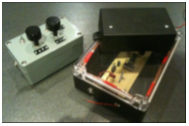
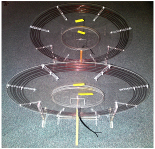
|
Wireless battery Charger |
|
Wireless Power Transmission coils |
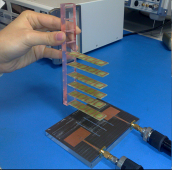
|
SRR for Antenna Isolation |
